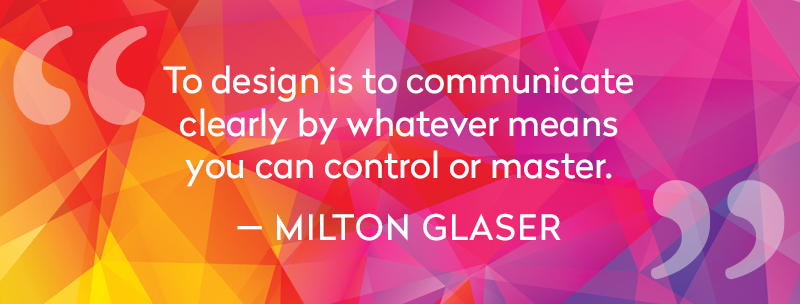Graphic design is a crucial element in developing a strong brand identity that effectively communicates with your target audience while supporting and building brand recognition.
Judging a Book by Its Cover
You get one shot at creating a first impression. Whether it’s a job interview, a first date, or opening night of your new restaurant, the first impression will stick and always be remembered. The same is true for your new website, company brand, or business card (to name a few important brand assets). You want to get it right the first time and make a great first impression. A successful first impression brings the customer in the door and allows you to further communicate your company or product’s value.

Research of health-related websites, by faculty at Northumbria and Sheffield Universities concluded that “visual appeal influences early decisions to reject or
mistrust sites.” Their findings showed that consumers judged the trust-worthiness of a particular site, not by it’s content and information, but by its design. Well-executed graphic design has the power to create a positive, and lasting impression. When you engage your customer with an aesthetically pleasing visual experience, you’re more likely to create a successful outcome.
The Art of Communication
Graphic design is an integral part of marketing and advertising. Designing for a client requires a strategy to successfully convey a message visually, connect emotionally with the customer, build brand awareness, launch an idea, and bring it to life.
Back to Basics
Implementing the core design principals of color theory, typography, photography, and illustration, merged with the client’s story, brand, voice and tone, a visual journey is born. Whether the client is in need of a company logo, full brand strategy, web design, email marketing, or social media campaign, it is crucial to have a dedicated graphic designer on board to facilitate the creative process—combining quality and authenticity for the visual assets.
Design on Repeat
While developing a deep understanding of the client’s needs, the designer will go through an iterative process to define the creative problem and find a visual solution. The designer will gather, research, explore, and discover pertinent information that relates to the project. This initial analysis plays a crucial role in defining the creative problem, as well as the needs and values of the client.
Together with the marketing team, the graphic design team brainstorms—communicating ideas and sharing valuable feedback. Beginning with preliminary design concepts, the visual phase is put into effect with sketches, wireframes, and mock-ups. Once the visual phase is approved in-house as a team, the build out of the design is applied with the core design principals.
The client is then presented with a round of designs to review. With feedback implemented, and the client’s final approval, the design is finalized. Art files are packaged and handed off to the client, and the production phase is completed.
Summary
Successfully connecting with your target audience requires clear and concise communication – both written and visual. Intelligent, creative graphic design reflects the quality of service or product offered by your brand, and distinguishes your brand from your competition. At Wield, our graphic designers are backed by a team of strategists, developers and marketers, all working together to support the design process. This team effort ensures that the final product accurately represents your brand, your message and your core values.
Let’s collaborate today and tell your visual story!